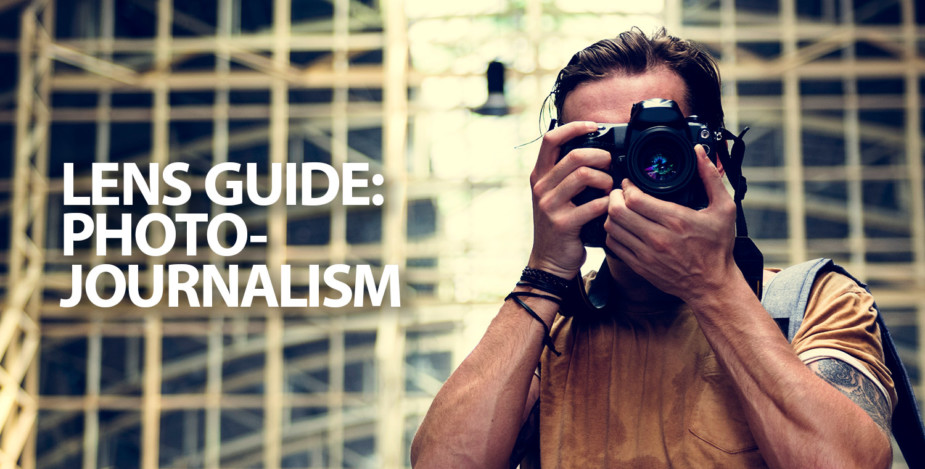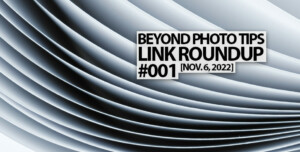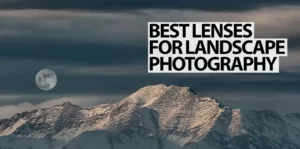Photojournalism calls for a wide range of skills, and a selection of lenses to match. Selecting the right lens at the right time is at the core of this discussion simply because of the range of events that they may be called upon to cover – a conference one day, a riot the next, and a Nobel prize winner on yet another occasion.
However, photojournalists need certain common qualities in all their lenses, and these are a constant. Let’s discuss the features that the best lenses have, and list a few of the most popular and useful lenses for journalism.
Table of Contents
Which is The Best Lens For Photojournalism?
The best lens for journalism depends on the photographer, the way they shoot, and the subject at hand. As a result, the lens that a photojournalist selects could change from photojournalist to photojournalist, as well as from assignment to assignment.
However, there is no short answer here, and there isn’t any single lens that is the best. So let’s look at the various options that you have. We also have a list of suggestions at the end of the article.
What Lens Should a Novice Photojournalist Choose?
A beginner in photojournalism should choose a rugged all-purpose zoom such as the 24-70mm or 24-105mm for full-frame, or 18-135mm for APS-C sensors. Here are our choices for the major camera brands.
- Sony: FE 24-105 f/4 G OSS
- Canon: RF 24-105 f/4 IS USM
- Nikon: Sigma 24-105 f/4 Art DG OS HSM for Nikon
What is Photojournalism?

Photojournalism is that immensely satisfying, yet sometimes wildly dangerous profession where a photographer goes out into the world and documents it so that the rest of the world can experience it through their eyes. Their goal is to tell a visual story and gain the empathy of the reader.
As photographers, many of us aspire to this profession, yet few have the guts and talent required to do what it calls for on a daily basis. It is a tough job to do well, and one that often doesn’t get the recognition that it deserves. It requires great technical and practical problem-solving skills and presence of mind. It is hardly ever glamorous.
The Problem With Defining a Fixed Set of Lenses
The problem with defining the Best Lenses for Photojournalism is that there are so many fields of journalism that there is no real “defining set” of lenses. Each kind of journalism calls for a different set of lenses.
Take, for example, the sports journalist… They would use lenses that fall into the Sports Photography category. I’m going to go out on a limb now, and ‘guess’ that what all you guys want to read about are the photojournalists who have the ‘real’ journalist’s job. The foreign correspondent… The journalist who records wars, drought, floods, changes in government, and so on. Let’s cut to the chase.
What do Photojournalists Ask for in a Lens?
Photojournalists do pretty much the same things as regular journalists; then some… They end up carrying their gear around almost all the time when they’re on assignment and land up in places that newspaper journalists never need to venture into.
All this makes it hard for them. Their choice of lenses, camera body, and other accessories depends on the kind of picture that they expect to be taking. Typically they have a vast range of gear from which they can choose.
A photojournalist’s equipment choice would need to be used for multiple purposes; lightweight, fast, and really, really reliable.
Key Features of a Photojournalist’s Ideal Lens Set:
#1: Large Aperture
Very often, photojournalists choose lenses with large apertures. Large apertures help them to focus more easily and quickly because they let in more light. It also gives them the flexibility to shoot in varying, and low-light scenarios.
The trade-off is in weight. Lenses with large apertures usually have very large front elements made of high-quality optical glass. This makes these lenses extra heavy. Prime lenses tend to have larger apertures compared to zoom lenses, and could be relatively smaller.
#2: Flexible Focal Lengths (zoom) Vs Quality (prime)
Photojournalists also usually have an odd assortment of prime and zoom lenses, with more importance given to zoom lenses for ease of use and composition.
Primes are selected for clarity and wide apertures, especially at the long focal length range, and zooms for ease of composition in situations that may demand a quick change from telephoto to wide-angle.
#3: Ruggedness, Weather-sealing, and Reliability
A photojournalist’s ideal lens must not fail them. It should be rugged, sealed from dust and moisture entering into it, and expect to have a long life while taking a fair share of knocks.
Must-have Features of all Photojournalism Lenses:
The exact equipment that goes into their bag on any given day depends on the assignment that they have been given.
Still… There must be some common qualities for the lenses that they tend to choose, right? What are these qualities? Let’s take a look.
- The lens should have sturdy build quality and be able to withstand rough continuous usage day in and day out for years. Journalists can’t afford to miss a shot because their equipment failed.
- The lens should have exceptional optical quality, but not at the expense of functionality. This means that they often choose high-end zoom lenses instead of using many prime lenses.
- Good weather-protection. The lens should be able to take on rough weather and not fail.
- It should be backed by a robust service network should it fail while on assignment abroad. The spare parts required to fix it should be available with reasonable ease.
- Above all, it should be reliable enough to last for many years, and not fail at critical moments.
Photographic Style and Final Usage
Of course, the personal style of individual photographers also plays a crucial factor in the choice of equipment… Is the style of photography more like street photography or war reportage, or is it something more elaborate with lights, a tripod, etc?
This will mean the difference between a light camera bag, and one that is geared towards the best quality even at the expense of weight. All this also determines what lenses the photojournalist will choose.
Personal Photography Style
However, personal style often overrides many other considerations. Some photographers may almost always use a 50mm, while others may use a 400mm f/4.0 L at one moment and switch to a 24mm wide the very next…
Subject Matter Being Photographed
To complicate matters, the subject being photographed also determines the kind of lens being used. For example, there’s absolutely no point using a 50mm lens while photographing a Formula 1 race (unless you’re photographing the crowd) and there’s no point trying to use a 400mm lens in a mob… you’ll only get their noses… of course, there always are exceptions.
In Summation:
To sum up this article: Photojournalists need good, robust lenses that ‘just work’ all the time. The focal length selection varies a great deal, so there is no single lens that is ideal, and they must have a selection of lenses at hand. Typically these are provided to them by their newspaper, as required.
Suggested Best Lenses for Photojournalism
Having said all that, let’s look at some lenses that may be well suited to photojournalists. The list can also go on and on, so I’m just listing a few here. These are some of the specialty lenses that you’re likely to find on journalists’ cameras.
Zoom Lenses for Photojournalists
Canon RF Lenses – for Mirrorless Cameras
Canon EF Lenses for Journalism
Nikon Lenses for Journalism
- Sigma 24-105 f/4 Art DG OS HSM for Nikon
- AF-S VR 70-200mm f/2.8E FL ED
- AF-S VR Zoom-Nikkor 80-400mm f/4.5-5.6G ED
- AF-S VR Zoom-Nikkor 70-300mm f/4.5-5.6G IF-ED
Sony Lenses for Journalism
- Sony FE 24-70 mm f/2.8 GM Standard Zoom Lens
- Sony FE 70-200mm f/2.8 GM OSS Lens
- Sony FE 16-35mm f/2.8 GM Wide-angle Zoom Lens
- Sony FE 200-600mm f/5.6-6.3 G OSS Super Telephoto Zoom Lens
- Sony FE 100-400mm f/4.5–5.6 GM OSS
Prime Lenses for Photojournalists
Canon EF Lenses – for DSLR Cameras
Nikon Prime Lenses
- AF-S Nikkor 600mm f/4D IF-ED II
- AF-S Nikkor 500mm f/4D IF-ED II
- AF-S Nikkor 400mm f/2.8D IF-ED II
- AF-S NIKKOR 300mm f/2.8G ED VR II
As you can see, this is a long list that will probably only grow longer the more we think about these lenses. The best lens is the one that you can afford today, so select one from the lists above, and go ahead and start off your career in photojournalism today.
If you're interested in any particular type of photojournalism (portraits, for example), do look it up in one of the posts I've written in "The Lens Buyer's Guide."
Help Us To Continue Creating
Get our email newsletter to stay up-to-date with our latest posts. It’s easy to read and is mailed once in 2 weeks.
The easiest way to support Beyond Photo Tips is by using our affiliate links when you buy anything at all. It will never cost you anything extra, and we get a small commission from it, which helps us a LOT! We share our recommended equipment list here.
Some of the links to products on this website are affiliate links, and we only ever link out to gear that we recommend.
You could also show your appreciation by buying us a coffee. Finally, we appreciate you being a part of the community, so do say hi!






There’s a very wide range of opinions on lens usage. A lot of people fall back on 35 + 90mm for general coverage in photojournalism. A guy had his work featured in some photography magazines using Nikkormat manual exposure cameras and just a Soligor 24mm f2.8 lens and Tri-X film. Long lenses are fine for picking faces out of a crowd but for my work – environmental, I use the Leica R system. A pair of R8 black bodies and 35/2 & 90/2.8 and Ilford XP2 Super. All carried in a Billingham 335 bag. Only nervous wannabes feel they have to carry everything except the kitchen sink. Zooms are heavy, slow, slow acting and contain what, 14 elements on average? Just walk forwards or backwards. Look what Don McCullum did in ‘nam with two unmetered Nikon F bodies and 28/3.5 & 135/2.8 Nikkors and a Weston Master V with Tri-X.
Thanks for your input, Dave. I second the opinion that one should pick their glass and adapt to its quirks… The ‘walking zoom’ is definitely something that newbies need to learn, and that veterans love to teach. A lot of journalism is time-sensitive these days, so there’s the use of digital cameras … with great performance at high ISOs, it makes the need for fast glass less important than back-in-the-day when you had maybe a choice of 1 or 2 film speeds, based on what you packed. I myself have worked with manual lenses and cameras all through my formative years, and understand where you’re coming from. In fact, when teaching photography, we used to give the students cameras without light meters, and ask them to estimate the exposure based on the Sunny 16 rule + their intuition… It’s a great way to learn. That said, it does look like my list is incomplete, and I’ll be filling out the prime section just a little more.
Thanks again for stopping by.